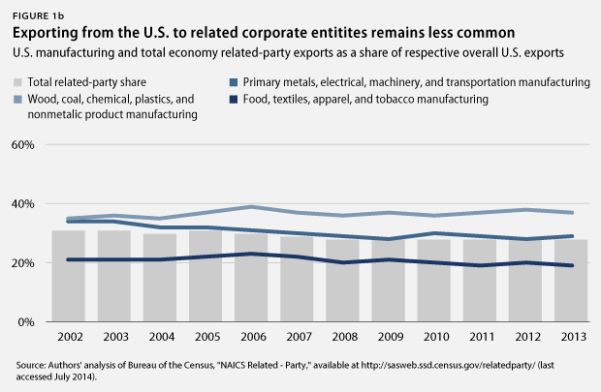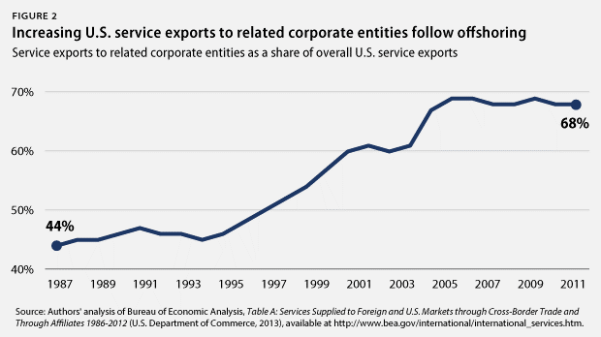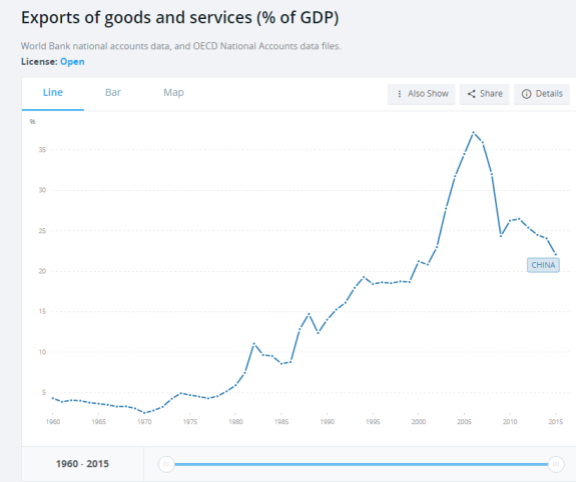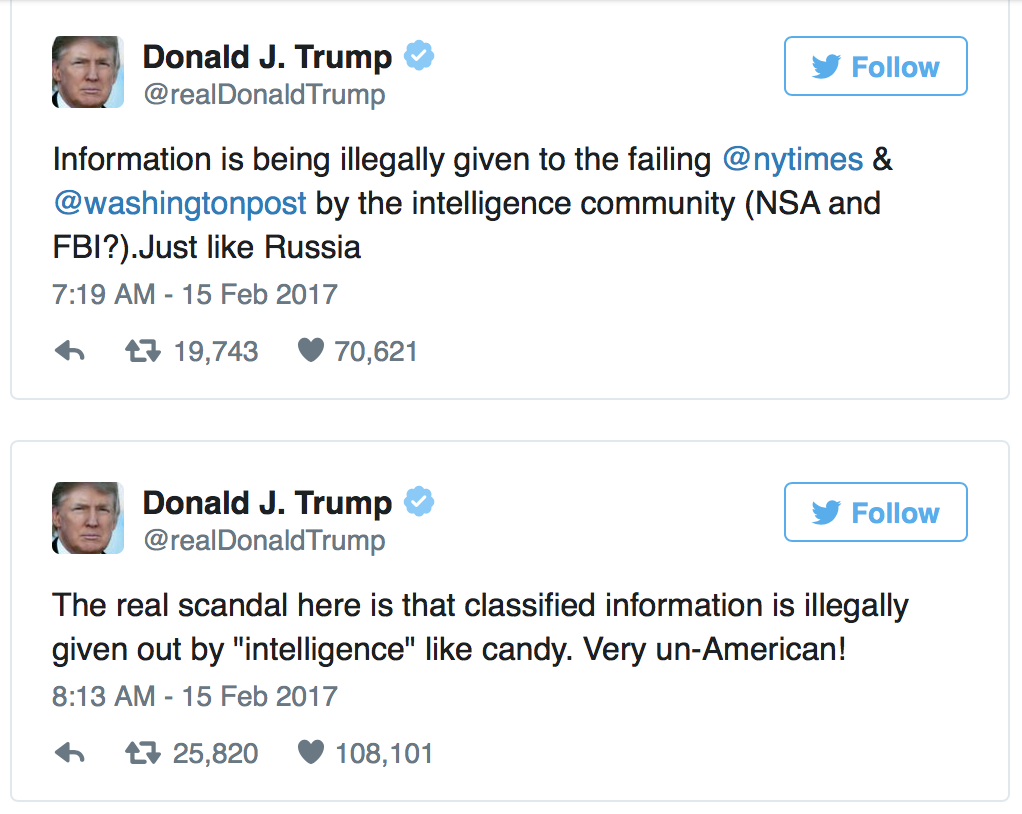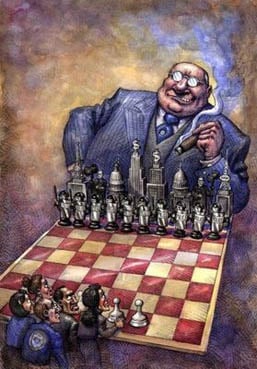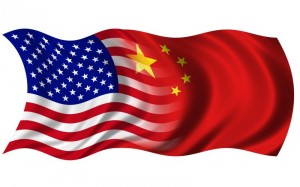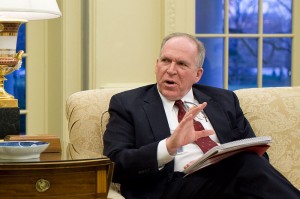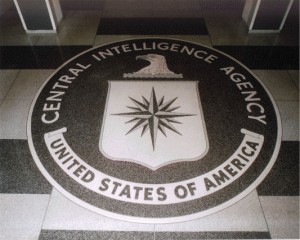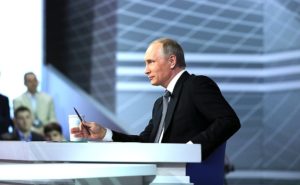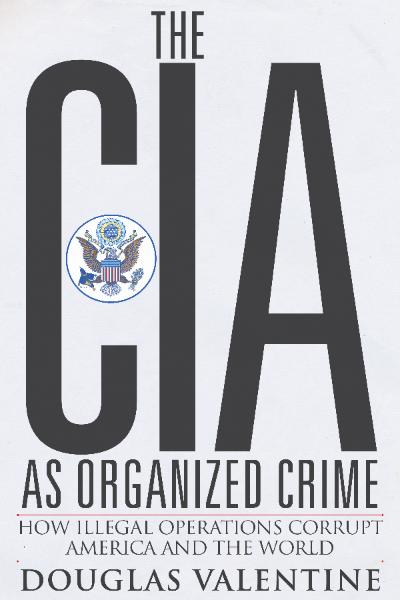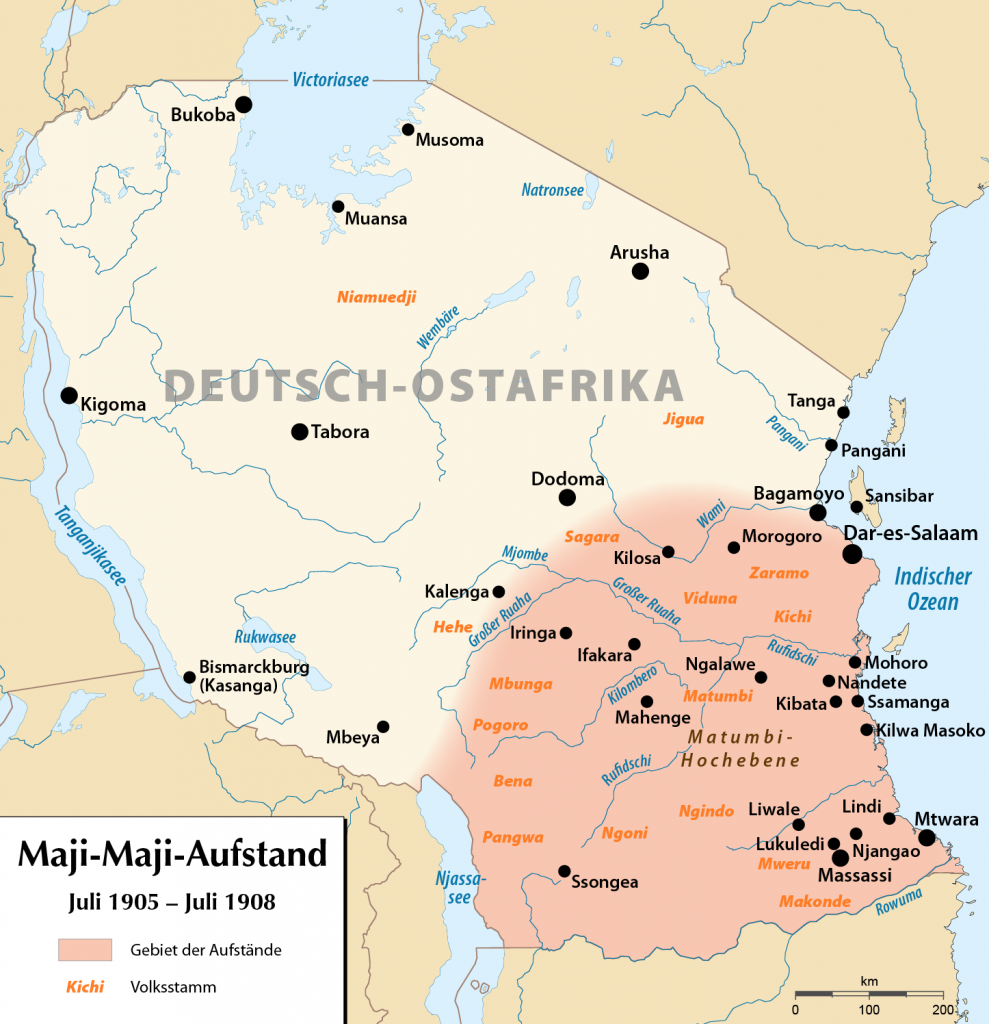What was the Cold War? Cold War Crucible: The Korean Conflict and the Postwar World (Harvard University Press, 2015) is an inquiry into the very nature and meanings of the conflict. It traces the Cold War’s metamorphosis during the Korean War from a diplomatic stand-off among policymakers to an ordinary people’s war at home through examining not only centers of policymaking, but seeming aftereffects of Cold War politics during the Korean War: The Red Purge in Japan, the White Terror in Taiwan, Suppression of counterrevolutionaries in China, the crackdown on “un-Filipino” activities in the Philippines, and McCarthyism in the United States. Why did such similar patterns of domestic repression occur simultaneously around the world? Were there any similarities among these repressions? What would happen if we were to remove the Cold War lens? What were the implications of such a worldwide phenomenon?
While these events have usually been examined separately and are commonly considered after-effects of the global Cold War, the book re-defines these events as parts of a global phenomenon of nativist backlashes—a sort of social conservative suppression—that operated to silence various local conflicts that surfaced in the aftermath of World War II. It shows how ordinary people throughout the world strove to silence disagreements and restore social order under the mantle of the global confrontation, revealing that the actual divides of the Cold War existed not necessarily between the Eastern and Western blocs but within each society, with each, in turn, requiring the perpetuation of such an imagined reality to maintain order and harmony at home. Exploring such social functions and popular participation, Cold War Crucible suggests that the Cold War was more than an international and geopolitical confrontation between the Western and Eastern blocs. It was also a social mechanism for purity and order, which functioned in many parts of the world to tranquilize chaotic postwar and postcolonial situations through containing a multitude of social conflicts and culture wars at home. This article draws on and extends parts of Chapter 8 and 9 concerning Japan’s Red Purge and China’s Suppression of counterrevolutionaries.
Reconsidering the Red Purge in Japan
At 3 p.m. on July 28, 1950, thirty-one workers at Mainichi Shinbun in Tokyo were called to their bosses’ offices, most of them individually, and told that they were fired, on the spot. The only reason that they were given was that the news media had an important responsibility in driving out communists and communist sympathizers from the company. Similar notifications were conveyed simultaneously at other major newspapers, such as Asahi Shinbun and Yomiuri Shinbun. This was the beginning of the waves of mass dismissals, conducted first through General Douglas MacArthur’s directive to remove communists from the newspaper industry.1 Based on this directive, fifty newspaper companies nationwide unilaterally notified a total of 704 employees that they were being terminated. These ranged from major newspapers like Asahi Shinbun (104 dismissed out of 5,200 staff), Mainichi Shinbun (49 of 5,000), and Yomiuri Shinbun (34 of 2,200) to small local newspapers such as Nihonkai Shinbun (9 of 90) in Tottori, as well as Shinyo Shinbun (1 of 50) in Matsumoto.2
This wave of mass dismissals in the newspaper industry then spread to other companies on a much larger scale. In the fall of 1950, roughly 13,000 people were fired from industries including coal, steel, shipbuilding, chemistry, railways, and mining—a phenomenon commonly known in Japan as the “Red Purge.”3 As the name suggests, these waves of mass dismissals have conventionally been viewed through a Cold War lens. The traditional understanding is that this was a purge of communists, conducted primarily under orders from the U.S. occupation forces. Under such a presumption, there has not been much discussion of who actually planned and conducted this so-called Red Purge. In the existing literature, the answer has almost been taken for granted.4 It was the Americans. It was the GHQ and Washington. Their reason for the Red Purge was, it is commonly argued, to make Japan a fortress against the threat of Soviet expansion in East Asia. By the same token, not much attention has been paid to who the actual victims were; that they were communists and communist sympathizers or innocent victims dismissed due to false charges has also been taken for granted. In short, the Red Purge has been commonly understood as an aftereffect of the Cold War—an inevitable result of the global confrontation.
However, this grand narrative has prevented us from inquiring further into the meaning of the Red Purge and the Cold War. Once we raise questions about the Cold War framework itself, the mass firings of 1950 seem more than just a Red Purge. Rather, they look more like part of a global phenomenon of domestic purges that raged in many places during the Korean War. To begin with, we need to make a distinction between the mass firings in the newspaper industry and those that followed in other industries on a much larger scale. The first wave was based on MacArthur’s statement, developed in the context of the Korean War and aimed at picking off “communists,” however vague the meaning of that term might have been—involved a series of mass dismissals which can be justifiably called the Red Purge. By contrast, the following and larger waves of mass firings, all of which were lumped together as the Red Purge, were carried out based on the judgments of each company, targeting not just communists but anyone deemed “destructive.”5 There was no single order issued by the GHQ. William Murcutt, chief of the Economic and Scientific Section, in fact, told Robert Amis, chief of the Labor Division in August 1950, that the “GHQ must not be involved in dismissals.”6 Recalling the situations surrounding the Red Purge, Amis told an interviewer years later:
It is a mistake to believe a criticism that I directed the Red Purge. I did not begin it. I believe that it came out from the inside of Japan’s labor unions … for they wanted to exclude communist factions. It came neither from the Government Section (in the GHQ) nor MacArthur; it came from the Japanese themselves. … I got embroiled by leaders of the management and labor. They often invited me to dinner, took pictures, and used it to show that they were close to me and that I was hoping to implement the Red Purge.7
Many historians of the Red Purge have been skeptical of Amis’s remarks, seeing him as feigning ignorance, because scholars have firmly believed in the absolute rule of U.S. occupation power in Japan.8 This view, of course, has a certain merit; after all, the GHQ intervened at various critical moments, such as the dismissal of “communists” at newspapers. Nonetheless, Amis’s recollection does not seem like a mere fraud, considering that this was when the GHQ gradually lost its special aura in the occupation of Japan. Over the course of the Red Purge, American officers experienced being ignored and used by Japanese actors, and many realized, as Valery Burati, a GHQ official in the Labor Division, wrote in a personal letter, that “the Occupation [had] gone to seed.”9 Japanese politicians and labor leaders likewise had been learning about this tendency and realized that they could negotiate, or even flatly reject, GHQ “orders.”10 In sum, the large portion of mass dismissal cases which are commonly considered part of the Red Purge was, in essence, planned, conducted, and maintained through judgments by each company, with each using its own reasoning and criteria for who should be let go and why.
Local Dynamics of the Red Purge
Let us take a look at one long list of criteria, compiled by the largest mining company in Japan, the Mitsui Miike Coal Mine, to examine how diverse the targets of their “Red Purge” were. This list, comprising twenty-two itemized categories, targeted not only communists, communist party members, and those who had left or been removed from the party, but also various “sympathizers” who, for example, had tried to help those who were fired. It targeted even those who might behave in such a way or might hinder the company’s operations.11 With criteria so broad and vague, how did this second wave of mass dismissals function on the ground? Observing the expansion of the Red Purge, the Labor Division of the GHQ warned that it must not be mixed up with the rationalizations of companies.12 Various archival documents show that the actual practice of this Red Purge was not limited to the termination of “communists”; more often, it was used in various local situations, as an excuse to dismiss certain kinds of people.
Take one case as an example: that of Nippon Kokan (Nippon Steel Tube Company), which fired 190 workers in the fall of 1950. The dispute began with an announcement by company president Kawata Shige, on October 23, that he was compelled to discharge workers “who hindered the smooth operation of the company’s business or refused to cooperate with the company.”13 Even GHQ officials, often considered operators of the Red Purge, were alarmed; one staff member in the Labor Division, for example, described this mass firing as an “abuse of the Red Purge.”14 As the chief of the division, Amis warned the Nippon Kokan management:
What I have said before is not being followed by the management. It seems to me that the management is taking advantage. Concrete reasons for dismissal should be given. If reasons for dismissal cannot be cited correctly, defer the discharge. When a dismissed employee does not fall under the reason, he should be returned to his post, and wages during his dismissal should be paid.15
The company simply ignored this warning.
Meanwhile, Ishijima Seiichi, a 27-year-old worker at the company’s Tsurumi Plant, wrote a lengthy petition to Amis, asking for help and explaining that, although he was an active union member at his plant, he had never been a communist or a communist sympathizer. He argued that the company disliked him because, as a union member, he had “found many defects in the way the management of the company [was] carried out” and because he “submitted his opinion about the improvement of the management.”16 Ishijima’s letter, which contained a detailed counterargument to the company’s charges, was translated and taken seriously. Amis then examined the letter’s legitimacy with the help of Japan’s Labor Ministry, whose officials interviewed Ishijima and concluded that he was not a communist. Based on this information, Amis met with company officers and urged them to give Ishijima his job back.
This time, the company reacted. It invited Ishijima to a dinner and told him that the company admitted he was not a communist. Yet it still refused to re-employ him and proposed a deal, offering him a sum of 250,000 yen—more than the average yearly income at that time—on condition that he not challenge the management again before the GHQ or the public.17 Ishijima was in a tough spot. Having a wife and children, and without any possibility of returning to the company, he apparently accepted this offer. We do not have any further records involving him. GHQ officials were confused and disturbed by the company’s refusal to rehire Ishijima, in spite of GHQ’s repeated warnings. One Japanese official at the Labor Ministry explained to them that, even though he was not a communist, he might be considered some kind of a “troublemaker” at the company because as one of the founding organizers of a union at his factory in Tsurumi he had actively criticized the management.18
In fact, it was Japan’s Labor Ministry, not the GHQ, who, in early October 1950, presented a “guideline” for the Red Purge at companies and accepted the dismissal of not only members of the communist party and fellow-travelers but also “those inveterate active trouble makers, taking leadership roles in activities, inciting others, or being original planners of incitation, thus causing real injury to the safety and peace of the enterprise.”19 Relying on this vague definition of “troublemakers,” numerous companies took advantage. One such case is that of Niigata Tekkosho, a small ironworks in Niigata Prefecture, where three dozen workers, mostly active union members, were fired as “troublemakers” for being “uncooperative,” “disturbing,” and “undesirable” elements at the company. One worker noticed that dismissals of workers were especially numerous where labor-management negotiations had been contentious.20
Similar conduct can be seen in the case of Japan’s major transport company, Nittsu, where 800 “reds” were fired. Many were, actually, guilty only of participating in wildcat strikes earlier in the summer of 1950. In the case of Dai Nippon Boseki (Dai Nippon Spinning Company), this tendency was so conspicuous that a GHQ official, Burati, described the company as “one of the worst offenders in the field of textiles in taking advantage of [the] ‘red purge’ to dismiss anti-communists who were, in fact, aggressive union officers.”21As this comment shows, the implementation of the Red Purge went far beyond the control of the GHQ and, in practice, covered up what were, in reality, labor and social disputes.
Nevertheless, it is still simplistic to describe the Red Purge simply as a phenomenon in which management took advantage of the anti-communist climate to solve labor disputes. This is because struggles were waged not only between management and labor but also within labor unions. In the case of Densan (All-Japan Electrical Workers Union), for example, a dispute between “communist” and “non-communist” factions had been developing since 1947. This internal dispute culminated at the union’s annual conference in Nara in May 1950, which was eventually canceled due to a violent clash between the two factions. Following this incident, the mainstream “noncommunist” faction of the union circulated a communiqué, requiring the full membership of approximately 130,000 to reregister, which was approved by 110,000 members and rejected by 20,000. When the management announced the dismissal of 2,137 “key figures” among those who had refused to reregister under the climate of the Red Purge in late August, the labor union acquiesced, because those dismissed were no longer “union members.”22
In other words, behind the image of ideological struggle between “communist” and “non-communist” factions, the point of contention was less over ideology than a sense of belonging within the company. As we have seen, the Nippon Kokan president’s criticism was about “uncooperative” attitudes by a “few” workers, who allegedly were acting according to “directions given by outsiders.”23 Likewise, as for the labor activists, what became the battle line was a sense of solidarity, not between workers across companies or nations but among employees of a specific company. One labor leader, in fact, recalled “strong attachment to the company” as a common tendency among mainstream union members, while not even trying to hide his dislike of those who did not have such feelings of intimacy for their company.24 In other words, the actual battle line was more about whether members “loved” their companies.
Similar tendencies were observed outside of private enterprise, such as at schools and universities. At an elementary school in Gunma Prefecture, for example, several teachers were fired for diverse, basically non-ideological reasons, such as “uncooperative attitudes,” “discord with colleagues,” and “criticism of local and national politics.” As is apparent in these examples, many cases of the so-called Red Purge actually involved a screening of nonconformists, dissenters, and malcontents at workplaces. In other words, the actual dynamics of the mass firings around 1950 were not necessarily about ideology but about a desirable style of order and harmony at workplaces and in society.
Many, of course, refused to accept sudden terminations and continued to fight. Some simply went to their workplace but were forcefully removed by security guards and plainclothes police. Others sought help from the union at their companies but, in many cases, were almost completely ignored. Still others took the matter to court, but many of their cases were refused as most courts concluded that they lacked jurisdiction over MacArthur’s orders during the occupation.25 But what most severely and effectively discouraged those who had been discharged, according to many people’s recollections, was the abrupt change in the attitude of their colleagues, union members, and personal friends. “I felt as if I had suddenly become a person with an infectious disease. Everyone stopped talking to me,” recalled Kuboi Mitsuko, a female employee at Asahi Shinbun, about the period after she was dismissed. She recalled that her colleagues literally turned their faces away when she happened to run into them.26
As seen in these examples, with the solidification of the Cold War framework, the Red Scare climate not only began functioning within companies and unions, but began affecting ordinary individuals’ ways of thinking and daily behavior. This climate further spread to employment in the fall of 1950, and many companies, particularly banks and department stores, concerned about image and reputation, began systematically using private investigators to check applicants’ backgrounds and political attitudes. This climate reminded some people of wartime Japan under the tight control of the Public Security Preservation Law of 1925, which provided a legal basis for the imprisonment of communists and socialists, as well as liberals and Christians, and later laid the groundwork for the repression of any kind of opposition to Japan’s war effort. It was this sense of a return to wartime values that precipitated the anti–Red Purge agitation among high school and college students.
Student Activism and Grassroots Conservatism
Although student movements had been growing from the early days of the postwar, the period between 1950 and 1953, in particular, marked their full zenith.27 On September 29, 1950, for instance, 1,500 students gathered at Waseda University in opposition to the firing of “red” professors at Waseda, Hosei, and Tokyo Universities.28 Anti–Red Purge movements spread quickly among students, and, a week later, in October 1950, about 3,000 students rallied at Tokyo University.29 The student movements became widely known to the general public on October 17, when a riot erupted at Waseda, during which police arrested 143 students in the first such mass arrest of students in Japanese history.30
|

Student demonstration opposing the Red Purge at the University of Tokyo, Japan (1950)
|
Kobe Mitsuo, one of eighty-nine students eventually suspended from the school for an indefinite period, wrote: “I am not a member of the Japanese Communist Party, nor am I a communist. Needless to say not a ‘tool’ of it. I am just an everyday sort of student. I just feel extremely angry about a powerful force that suppresses freedom. I am sure all of us remember the ravages of war.”31 This statement indicates that his opposition to the Red Purge was less based on his party affiliation or political belief than his experiences during World War II. This feeling was shared widely among many participants in student movements. The evolution of such student activism is worthy of study, but our interest here is not so much student movements as social reactions to these movements.
In brief, the general reaction toward anti–Red Purge movements was one of disinterest. The general public was less concerned with the “Red Purge” than with the seeming threat to social order. For instance, major newspapers remained critical of the student movements. Describing them as an “unprecedented scandal,” an editorial in Mainichi Shinbun asserted: “College students should not behave like spoiled children.” The newspaper went on to say that the “scandal” was taking place under the “guidance of a small and peculiar group of students,” that student activism was nothing more than a “kind of sport among certain happy people,” and that the youth and women were particularly vulnerable to communist propaganda.32 Asahi Shinbun, similarly, warned that such “extreme actions” should be stopped to ensure social order.33
Even college newspapers, like Waseda Daigaku Shinbun (Waseda University Newspaper), which had supported student political activity, changed their tone, stating, “Students must not be rioters at any time. The incident was by no means orderly behavior.”34 From their perspective, the anti–Red Purge movement was bad not because of its point of view but its violation of social order. For many, whatever the content of their arguments, the students needed to be punished because they violated public order and security. In order to restore order—and to pacify the students—two measures were taken: first, a number of the leading figures of the student demonstrations were detained, and, second, the Cold War logic, which effectively provided a context for marginalizing disagreements and restoring order at home, was even more widely disseminated.35
Such a desire for conventional order clearly played a part in the 1952 national election—the first following the end of the U.S. occupation, which returned a conservative party to national leadership. Observing the election results, the literary scholar Togawa Yukio wrote:
The fact that the Liberal Party obtained a majority after all demonstrates the popular will. It suggests the wish of the voiceless people, which seems to be: “No more reform.” People are finally able to live like decent human beings seven years after being defeated in the war. Of course, they have grievances and anxiety, but for now people want to preserve the status quo. After drastic reforms, one after another, people usually feel, for better or worse, “It’s all right as it is. Don’t change anything more.” I think now is the time for such a period.36
Togawa’s observation was, perhaps, too restrained, because the victory of the conservatives did not mean the maintenance of the status quo of the postwar period. Their victory clearly supported the restoration of the traditional, accustomed order in Japan, which was disrupted, from the conservatives’ perspective, only during the wartime and occupation period.37 However, Togawa had a sharp eye in pointing out that society had come to dislike dramatic social change.38
To get a feeling for the social atmosphere, one can read hundreds of letters and postcards in the National Diet Library in Tokyo, written by ordinary people and sent to various local and national politicians from the fall of 1950 through 1951. One is from an anonymous resident in Kyoto, sent to a local politician in 1951. This letter is interesting because it expressed an aversion to social change in the postwar period and because it advocated limiting such change in the name of national defense. It read:
I believe the course of action we have taken since the defeat in the war in every field, particularly politics and education, must lead to the destruction of our nation. Such a way simply won’t work to fight communism at all. … I don’t want to turn our country into a battlefield. I don’t want to turn our country into the Balkans in East Asia, or another Korea. I want to save our country by our hands, and, no matter what, to protect it from foreign invasion.39
At the end of this long letter, the author got to the crux of his concern over the lack of chushin (center) in postwar Japan:
We, the people of this nation, wish to have a center. The solidarity of the nation is of vital importance. Nobody in our country will accept lines of argument such as “for freedom,” “for peace,” or “for the improvement of the standard of living.” Most importantly, we don’t want to throw away our long tradition. Nor do we want to give up our history. Only in this manner will we be able to achieve independence and to cooperate with the anti-communist front on the Western side.40
In stressing the “threat” of communism, what this anonymous writer longed for was to reassemble a shattered social order—or, broadly, a conventional and desirable national identity. For this author, however biased his interpretation, foreign events and the war in Korea provided a chance to effectively address his concerns on domestic issues.
Indeed, like other societies, Japanese society had changed a great deal during and after the war. The center seemed to be “lost,” and traditional order seemed “disturbed.” Students were rioting, women were increasingly working outside the home, and workers also were expanding their influence. The rise of new actors in postwar Japan made a large portion of the conservative population of Japan anxious, even resentful. One of the angriest men might have been a 58-year-old doctor, named Hidaka Hiroshi, in the small city of Yonago, Shimane Prefecture. He was worried about the postwar emergence of women, who, he believed, were “ignorant and uncomprehending.” He wrote in April 1951:
I feel gloomy about the superficiality of Japan’s national character and its society today when I see such women, jumping on the bandwagon of the current of the times, getting positions in important posts such as mayor or congressman. Women who put forth practically impossible arguments against rearmament are virtually traitors to our country. It is no exaggeration to say so in view of today’s world situation.41
This letter is interesting because of the writer’s use of the “real world situation” to express his disgust about the rising status of women in postwar Japan. He continued:
From old times, the saying “There are women behind history” always means tragedy and collapse. Women’s participation in politics rarely produced positive results, and, whether in the East or the West, there are many examples of the saying “A woman who shows her cleverness fails to sell the cow.” While we cannot take legal measures to ban women’s political involvement, we should seriously question the appointment of women to important posts in politics. The anti-rearmament argument is, after all, a purely empty theory that ignores the real situation in the world.42
At the end of his long letter, he expressed opposition to conducting a referendum on amending the constitution on the grounds that the majority of “ignorant” women might cause an unfavorable result. This letter is interesting because of its clear expression of grassroots conservatism opposing social change in the postwar period, and because of its use of the East-West confrontation in an attempt to contain such social conflict. Of course, this letter was not written as a representative voice of a particular group, but it conveys the feeling of people who quietly supported the social purges of 1950 and who supported silencing anti–Red Purge movements. It was such people who directly and indirectly repressed various “troublemakers” under the name of the Red Purge. Indeed, the legacy of this social suppression and punishment lasted for years and even decades. According to memoirs, many who were purged experienced difficulty in getting jobs and were ostracized in their hometowns for years, which resulted, in extreme cases, in family estrangement, divorce, and suicide.43
A large majority of the literature on the Red Purge suggests that it was the GHQ and Washington that ordered the purge of communists and communist sympathizers in order to create an anti-communist country in East Asia. However, what we have seen here does not fit neatly into such a Washington-directed model. First and foremost, many dismissals at ordinary companies actually resulted from ordinary employers’ own decisions, and factional disputes in labor unions facilitated the mass dismissals of certain groups of people. Second, most of those expelled were not necessarily communists or fifth columnists. Third, in some cases, the Labor Division of the GHQ even tried to stop “abuse of the Red Purge,” and many were, nevertheless, fired for disturbing the conventional order and harmony of their workplaces. Finally, opposition to the Red Purge was muted among the majority in society, who chose to say: “No more reform.” Therefore, it is reasonable to suggest that the Red Purge was carried out not so much by the GHQ and Washington as by tens of thousands of local people in Japan.
This re-examination of agency leads us to reconsider the nature of events. In some cases, events fit well with the conventional Red Purge model, but a large majority of other cases are better understood broadly as social repression conducted by nameless and numberless local people in attempts to restrain social disagreements that came surfaced following Japan’s defeat in the war. Viewed in this way, the Red Purge does not seem like a mere end result of the Cold War; rather it was part of a conservative backlash among a large portion of the population that silenced disagreements and created domestic tranquility, for which the imagined reality of the Cold War was a vehicle.
*****
Interestingly, such a situation was not unique to postwar Japan. Similar suppressions and purges simultaneously swept over many parts of the world: the suppression of counterrevolutionaries in China, the White Terror in Taiwan, the crackdown on “un-Filipino” activity in the Philippines, and anti-communist and anti-leftist movements in Western societies, such as anti-labor agitation in the United Kingdom and McCarthyism in the United States. Conventionally, these events have been viewed through a Cold War lens, and thus treated as end results of the global Cold War confrontation on the ground. Removing this lens allows us to identify a different pattern of commonalities: a global phenomenon of purification and ordering in a chaotic postwar world. Before discussing the meaning of this wave of social repressions during the Korean War, let us explore another example that is usually treated as a typical case of Cold War ideological suppression: the large-scale purge of “counterrevolutionaries” in China in the fall of 1950.
Reconsidering the “Campaign to Suppress Counterrevolutionaries”
On the morning of April 28, 1951, the atmosphere was heated at Shanghai’s famous Canidrome, a once fashionable and dazzling greyhound-racing stadium, originally built in 1928. Squeezed against the oval of the immense greensward was a crowd of 10,000 people. A stage was set up in front of the central platform at the center of the sea of humanity, and on stage were the accused, bound by ropes or chains, with heads down, awaiting judgment, and listening to speeches by Party officials, witnesses, students, and peasants. According to a reporter for the British newspaper Manchester Guardian, the masses of people sang songs, waved red flags bearing the slogans of the regime, and howled imprecations against the accused. It was one of countless mass accusation meetings in Shanghai, conducted as part of the Zhenya fan geming, or Zhenfan (Campaign to Suppress Counterrevolutionaries), a wave that swept Shanghai and numerous other cities nationwide from the late fall of 1950 throughout the summer of 1951. Such a mass meeting was reportedly preceded by a series of accusations and confessions, in each case followed by a customary question and answer between official prosecutors and the crowd. “Shall we shoot them?” asked a prosecutor, in one instance. “Death to them! Death to them!” answered the crowd, “Take them back to the scene of their crime and kill them.”44
On that day at the Canidrome in Shanghai, the crowd sentenced to death more than 200 with such shouts, which local newspapers described as “a unanimous roar.” These sentences were reviewed and confirmed the next day by the Shanghai Military Control Commission. According to court documents, Zhang Wanjin, a 31-year-old former police officer, who retained his position following the change of regime, was sentenced to prison for the crime of spreading a rumor in 1950, allegedly saying, “Chiang Kai-shek will counterattack this year, and the U.S. forces will land at ports nearby, attacking Shanghai from three directions—land, sea, and air.”45 Likewise, Lian Zhenan, a 33-year-old former military doctor, was sentenced to prison, charged with allegedly having disrupted a fanMeifuRi (Oppose U.S. support Japan) demonstration in Shanghai on March 4, 1951, by shouting “reactionary” slogans.46 Cheng Wei, a 39-year-old man, was sentenced to death, charged with allegedly having spread “reactionary” rumors, such as “The Nationalist Party is coming back.” According to a judgment, available at the Shanghai Municipal Archives, he retorted, “Now everyone shouts Chairman Mao. But in the era of Chiang Kai-shek, everyone shouted Generalissimo Chiang, Generalissimo Chiang. Why did nobody say Chairman Mao at that time? We don’t need to be honest!”47
|

Mass accusation meeting in land reform, Yangsi district of Pudong, Shanghai, PRC (1951)”
|
As soon as their sentences were confirmed, such “criminals” were transported to public execution sites. Let us take a look at an example of a public execution, observed by Norimura Kaneko, a Japanese girl who witnessed a mass execution in the small city of Haicheng, near Shenyang, in the late summer of 1951. Norimura’s family continued to live in the area after Japan’s surrender in World War II because her father was a doctor who had worked for the CCP during the civil war. Norimura was a student at a local middle school. On a sweltering day. Norimura and her schoolmates walked to the beach along the Haicheng River to attend the event without knowing what kind of event would be held. When they arrived in the late afternoon, a crowd of people had already assembled. Children were playing nearby. Many students from other schools arrived at the site, and there was a joyful mood in the air. As usual at this sort of gathering, the crowd began singing, and Norimura and her classmates joined in. Within an hour, a chorus of people began yelling: “Crush the invasion of American imperialism!” and “We will never allow spies’ subversive activities!” Innumerable fists were raised in the air as the slogans were repeated. “What on earth is going to happen?” Norimura wondered.48
Before long, a progression of men appeared, hands tied behind their backs. The first was a thin, middle-aged man; he looked poor, his hair a mess. The second was a fair-skinned young man, in tears, nose running, chin dripping with slobber. The next one surprised Norimura, because his loose-fitting trousers slipped down to his ankles, exposing his body below the waist, as he was dragged along by soldiers, walking awkwardly. The children laughed at him as he passed by. The rest of the crowd—men and women, young and old—likewise laughed derisively and convulsively, pointing, booing, and heaping ridicule and scorn on the man. These “counterrevolutionary” prisoners passed by Norimura’s eyes one by one and soon came to a stop about 100 feet from her, where they knelt as if bowing to the sun. Norimura suddenly noticed that there was a hole in the ground in front of them. “Shh! . . . Shh! . . . Quiet!” people said to one another. Soon the sound of a rifle being cocked could be heard, and, then, a soldier held the muzzle of the rifle against a prisoner’s head.49
Bang!
With a crack, the man who had been crying fell silent and disappeared from Norimura’s sight. The executions continued, one by one. Even after they were finished, the crowd remained excited. Some people tried to look into the hole, where the bodies of the prisoners had piled up.50
In this way, scenes of denunciation and execution were repeated in numerous locations all over China between the fall of 1950 and the summer of 1951. In Beijing and Tianjin, mass meetings were reportedly carried out, 29,629 and 21,400 times, respectively, and, in Shanghai alone, more than 33,000 people were denounced and nearly 29,000 were charged with being “counterrevolutionaries.”51 It is not surprising that, in this period, reporting the number of executions week after week became routine for foreign diplomats.52In addition to reporting the number of deaths, some British diplomats in Shanghai stated that their domestic servants had suddenly disappeared or had been arrested for being “running dog[s] of the imperialists.”53 Although we still do not know the precise number of those executed and imprisoned during this period, the historian Yang Kuisong indicates that it was officially claimed that roughly 712,000 people had been executed nationwide, 1,290,000 were imprisoned, and 1.2 million were at some point under house arrest.54
The Campaign to Suppress Counterrevolutionaries has generally been considered, with good reason, a top-down, coercive, political cleansing campaign by the CCP, aimed at repression of former members of the Nationalist Party and party sympathizers.55 Scholars have paid great attention to the role of the CCP—in particular Mao Zedong—in the movement. While disagreements surely exist in terms of political stances and evaluation of the phenomenon, most scholars approach this subject through the lens of traditional political history, that is, looking at a political event (the “Zhenfan movement”) largely as a result of the intentions of policymakers. To be sure, this approach has a certain merit. The campaign initially developed as a result of Mao’s directive issued on October 10, 1950, the so-called “double-ten directive,” and further escalated in late January 1951 under his instruction, and, thus, it makes sense to emphasize Mao’s responsibility.56 Nonetheless, this approach has tended to confirm our traditional understanding of the movement, describing it as if the Beijing leadership had a consistent intention and policy, as if the CCP controlled the expansion and contraction of the phenomenon from above, as if ordinary people were merely passive followers—or victims— and as if the campaign followed a communist path peculiar to post-1949 China. These points need to be further examined, as they contain quite a few myths.
People’s War at Home
First of all, Beijing did not necessarily have consistent intentions or beliefs in supervising the Zhenfan movement from beginning to end. As Yang Kuisong traces in detail, Beijing’s policy followed a zigzag course even in this short period. For example, within just two months of the announcement of the double-ten directive, Liu Shaoqi sought to slow the escalation of the Zhenfan movement, and Mao agreed, suggesting that an “excessively nervous atmosphere” must not be created. A month later, in mid-January 1951, however, Mao endorsed a number of large-scale executions in western Hunan as a “completely necessary step,” an example that, he then urged, should be followed by all other provinces, in both urban and rural areas.57
In addition, although the Zhenfan movement surely evolved under the direction of the central authorities, the CCP center did not necessarily control the course of the phenomenon. When Beijing sought a comprehensive retrenchment of the campaign after May 1951, for instance, the waves of arrests and executions did not actually diminish in many parts of China. On the contrary, they continued to grow, despite the change in Beijing’s policy. In East China, for instance, an additional 110,000 people were arrested and nearly 40,000 were executed after Beijing tried to limit large-scale and unofficially sanctioned arrests and executions.58 A similar pattern in which Beijing sought to scale down aggressive local sentiments appeared in dealing with foreigners living in Chinese cities. Beijing was criticized as cowardly when it set a policy of deporting foreigners who committed “counterrevolutionary” acts; according to one local official’s observation, some even accused the government of being weak-kneed and incompetent toward foreigners and foreign countries.59
Why did Beijing not have a consistent policy, and why did it not exercise greater control over the campaign? In the first place, the direction of the Zhenfan campaign was always linked with the war situation in Korea. For Beijing, the progress of the Korean War was an uncertain variable that could harm the CCP’s domestic programs. For instance, a report from a regional CCP office argued that a lukewarm attitude toward the Zhenfan campaign would be blamed if the war situation turned against China, since such an attitude might place the CCP on the defensive and create difficulties if the advantage was lost.60 As is clear in this report, the Zhenfan campaign was seen as being of a piece with progress in the Korean War. In fact, policy changes in the movement coincided with changes in the war situation.
Related to this, another uncertain, arguably more fundamental variable for CCP officials was the state of popular attitudes at home, which could easily shift as a result of a change in the war situation. As a matter of fact, the question of how the masses would react was raised frequently at moments of policy change in the campaign. For example, when Beijing sought to lower the temperature of the Zhenfan movement in December 1950, it was reasoned that “indiscriminate and multi-directional strikes [should] be avoided lest the overall situation become too tense and we ourselves become isolated.” Mao supported this view, emphasizing: “If our cadres do not have a clear idea … and do not stick strictly to it, … the people will not support us.”61 Then, when Beijing decided to implement a more aggressive and harsh policy in late January 1951, Mao justified it as follows: “If we are irresolute and tolerant to this evil [of counterrevolutionaries], we will alienate the people.”62 As we can see in these comments, consideration of popular attitudes constituted an important part of Beijing’s policy-making logic.
Put simply, the course of the Zhenfan movement was often swayed by circumstances and Beijing’s day-to day observations concerning them, rather than by the CCP’s ideological preferences or Mao’s personality. The spread of the Zhenfan movement further suggests that the phenomenon was not simply a result of CCP political repression but was perpetuated because of its own dynamics—that is, the Campaign to Suppress Counterrevolutionaries as social repression and punishment.
Social Suppression in Communities
Let us briefly look at how the Zhenfan movement functioned at the local level. Beyond ideological slogans and dramatic spectacles at mass meetings, ordinary practices in the movement were less concerned with ideology and political struggles. For example, when members of the Association of Street Vendors in Beijing implemented the campaign in their markets, they used it for their own purposes to tighten morals and order among the membership. Their slogans in this anti-counterrevolutionary campaign were:
No delay in making tax payments.
No cheating of customers.
Always issue receipts.
Use standardized measuring instruments.
Do not charge an artificially raised price.
Keep street stalls clean 63
In addition, “Do not pee or shit by the roadside or inside stalls” was a slogan that the Vendors’ Association advanced in its campaign against “counterrevolutionaries.”64 Many of these topics had no apparent connection to the CCP’s struggles against “counterrevolutionaries,” but, interestingly, this campaign was framed and conducted in the name of “Suppression of Counterrevolutionaries.” It was claimed that street vendors were fighting a different kind of war against counterrevolutionaries on the home front, that cooperation among vendors could stabilize the Chinese economy and public order, and that their tax payments would support the fight against American imperialism on the front lines.65 In short, local people utilized the foreign war and adopted the banner of the Campaign to Suppress Counterrevolutionaries for their own purposes.
Such local use of East-West confrontation was ubiquitous. As in other places, those living in the neighborhood of the Dong’an Market in Beijing adopted a guilt-by-association system during the campaign; under this system, five households formed a group, in which each household would monitor another, and, if one member of a group committed a violation, all members would be punished.66 Such a mutual surveillance system functioned quite efficiently. In one instance, when a street vendor tried to cheat a customer, it was reported that the other vendors all informed on him.67 In another case, local residents in Beijing participated in the Zhenfan movement by forming district patrol groups, though, in addition to searching for “subversive” activities, their primary aim was to prevent fires and thefts.68
In another case, a neighbors’ group interceded in the case of a husband’s engaging in domestic violence, accusing him at a community meeting, at which the man in question offered a self-criticism and promised not to commit domestic violence again.69 A resident of this district described the spirit of the neighborhood as radically improved after the establishment of the neighbors’ group; the area became cleaner, thefts were eliminated, bumpy roads were repaired, and residents’ disputes were settled by the neighbors’ group.70Clearly, as in the case of the Street Vendors’ Association, the Dong’an Market campaigns had almost nothing to do with ideological and political struggles against “counterrevolutionaries.” Rather, when it came to daily practice, locals adopted and developed the campaign in a much more commonplace manner, which functioned not merely as political cleansing but as a mechanism of “social cleansing” in order to restore and maintain order in communities.
These local campaigns on the ground show historical continuity with the past. What local people aimed to achieve was a set of norms, such as cleanliness as opposed to filthiness, unity as opposed to disorder, precision as opposed to laxity—or even corruption—and so on, which, actually, had all been familiar concerns in Chinese history since the late nineteenth century. Therefore, seen from a social point of view, the Zhenfan campaign was not particularly unique to the post-revolutionary period. It even had some similarities to the Nationalist Party’s failed campaign, “Xin Shenghuo Yundong (the New Life Movement),” in the prewar period. According to the historian Arif Dirlik, from the viewpoint of Chiang Kai-shek and GMD leaders in the 1930s, traditional life for the Chinese could be summed up in a few words: filthiness, hedonism, laziness, self-indulgence, and so on. That is why the GMD’s New Life Movement specifically delineated eight criteria to be pursued: orderliness, cleanliness, simplicity, frugality, promptness, precision, harmony, and dignity—some of which were identical to what was sought in local practices of the Zhenfan movement in the communist era.71 The crux of these values was, in sum, an effort to achieve modernity, or even blatant Westernization, in a way that rejected the traditional way of Chinese life, which tended to be described only in negative terms. Viewed in this way, the GMD’s and CCP’s movements did not seem fundamentally different. Although, of course, the terminology was different, both aimed at achieving modernity—a long-standing task, which had been a goal for decades—through mobilizing and uniting the scattered and disorganized people, whom Sun Yat-sen (Sun Wen) once bitterly described as “a heap of loose sand.”72
The fundamental differences between the two were in terms of agency rather than content. In the Zhenfan campaign, informants and investigators were not necessarily official or secret police, as in the GMD era, but largely ordinary people. In fact, various “counterrevolutionary” acts were identified and reported less through official investigations than unofficially through rumors and private accusations among individuals at workplaces, at schools, in communities, in neighborhoods, and in families. Many, to be sure, remained skeptical or critical of the campaigns, particularly the mass executions. “It was too lenient before, but now it is too harsh,” some reportedly said. Others likewise lamented, “It is pitiful to execute the old, and regrettable to kill the young.” Still others were more sympathetic to those accused: “They committed their accused acts perhaps due to the pressure from their livelihood; everyone would do the same if their living became strained.” Some even expressed doubts: “There have been too many executions. There must be some false charges.” Nevertheless, these skeptical and critical views remained the minority, and these opinions were quickly responded to in retorts by others around them: “Well, do you really know how they murdered the people before? Those who were killed by these persons died in much more miserable ways.”73
Clearly, the campaigns could not be fully implemented without the participation of a great number of people. In Shanghai alone, the authorities received more than 70,000 written denunciations.74 Young people in particular were extremely active as informers; a box set up at Fudan University in Shanghai, for instance, received more than 700 reports in a few months in the spring of 1951.75 Reportedly quite a few cases involved children and wives informing on their fathers and husbands, and vice versa.76 An official in Shanghai stated:
During the Campaign to Suppress Counterrevolutionaries, a lot of young people actively joined in the movement, often exposing their own fathers, sisters-in-law, and even close friends as counterrevolutionaries. A multitude of people cooperated with the Public Security Bureau to collect information, participate in surveillance, and arrest counterrevolutionaries.77
Surveillance among the people, among students and workers, and among neighbors and family members, was so intense that many individuals internalized the campaign, restricting their own behavior. Some who came under suspicion voluntarily appeared at public security bureaus, describing their acts and associations, while others simply shut themselves up in their houses, stopped going out, and became isolated from society. In addition, some who possessed small weapons quietly left them at the doors of public security bureaus at night.78
More tellingly, a massive number of people decided to end their lives. Statistical data collected in the summer of 1951 shows that the ages of those who had committed suicide ranged from the early twenties to the early sixties, with those in their thirties the most numerous, and that quite a few wives of those executed as “counterrevolutionaries” also felt compelled to kill themselves.79 Those who committed suicide comprised a diverse group of people—not only landlords and former members of the Nationalist Party but also those categorized as drifters, local rebels, collaborators, and members of secret societies and religious sects, as well as those deemed “feudalistic” and “uncooperative.”80 Such heterogeneity suggests that we reconsider the nature of the Zhenfan movement.
Exactly the same point can be made concerning those who were executed during this period. If the Campaign to Suppress Counterrevolutionaries was purely a movement of political repression carried out by the CCP aimed at the elimination of adversaries, those who were executed and committed suicide should have been mostly political and ideological enemies, such as landlords and businessmen, as well as former GMD members and sympathizers. Yet, to the contrary, a large number, particularly those who had worked for the GMD, such as bureaucrats, police, teachers, and lower-ranking officials, retained their positions and continued to work. Those actually condemned and eliminated during this campaign involved a much broader and diverse group, comprising those who fit more neatly into the category of “social enemies” than that of “political enemies.” They included, for example, members of religious sects such as Yiguandao (Persistent Way), powerful gangs such as Huangniu Bang (Yellow Ox Gang), and secret societies such as Sanhehui (Triads), Qing Bang (Green Gang), and Gelaohui (Elder Brothers), as well as common criminals and those involved in what were considered social evils, such as bandits, murderers, thieves, local bullies, low-level hoodlums, brothel keepers, and prostitutes.81 A British official in Beijing observed that many of those executed were not really “counterrevolutionaries” but “little more than common criminals.”82
Apparently, what these diverse people shared was not a single ideology. They were, rather, symptomatic of the dramatic social confusion and disorder that evolved in the midst of social chaos in the turbulent years of the 1930s and 1940s. These were years in which battles among warlords, the War against Japan, and the Chinese Civil War were fought, and in which social and moral standards seriously deteriorated, if not collapsed, causing massive increases in crime. This was also the time when various kinds of religious sects and secret societies wielded strong presences, though surely they all had their own long histories.83Viewed in this way, the Zhenfan movement in part was a movement of “social purification”—a backlash against social disorder.
A similar point can be observed in regard to the Sanfan wufan (Three-Anti and Five-Anti) movements, which developed in 1951–1953, following the Campaign to Suppress Counterrevolutionaries. Originally, the three antis referred to the CCP’s fight against three “evils”—corruption, extravagance, and bureaucratism—which supposedly represented the evils of capitalism. When actions in the name of this ideological slogan were carried out, however, actual conduct criticized was less ideological and more related to personal characteristics and social behavior, such as going to a dance hall, owning a private car, or engaging in a sexual affair outside marriage.84 One document included a lengthy explanation of typical targets of this movement:
Pursuing personal and selfish pleasure, disliking cotton cloth, buying new leather shoes to replace [ordinary] low-cut shoes, dining out on [costly] noodles instead of having breakfast in a factory, avoiding sitting around a one-pot meal together and preferring a sumptuous meal, accompanying dishes with rice, smoking a cigarette, wishing to live in a Western-style house, envying American bedclothes as comfortable, shunning a train as crowded and desiring to use a car or, at least, a pedicab, ride a pedicab just to go one kilometer, never negotiating price, avoiding cheap articles, and hoping to get things with high quality even though they are expensive.85
The items in this list were not primarily concerned about individuals’ ideological tendencies so much as attitudes and behaviors on a daily basis. What they shared was, rather, an antipathy to things considered non-Chinese or, simply, overly Westernized attitudes and tastes—a sort of a nativist backlash against conspicuous foreign influence, most notably in large cities such as Shanghai and Tianjin.
Simply put, the CCP’s mass movements, such as the Zhenfan and Sanfan movements, were not merely political campaigns under the aegis of the Party. Rather, as they spread and escalated, they seemed to attain other dimensions—that is, first, they were parts of a long-standing goal of modernization, and, second, they were parts of a contingent, large-scale, nativist backlash, whose goal was the creation of a “harmonious” society through the elimination of tens of thousands of nonconformists and various elements of social disorder, including those deemed to have been overly influenced by Western cultures.
Security and Peace
In October 1951, Luo Ruiqing, the minister for public security, praised the Campaign to Suppress Counterrevolutionaries, saying that it “brought a stable situation nationwide that China has never had before in its history.”86 Solely in terms of the level of social stability, unprecedented “peace” and “harmony” had come to China. In Nanning, for instance, the number of criminal cases declined from 4,314 in 1950 to 1,318 in 1951 and 455 in 1954.87 Likewise, in Jiangxi Province, which was known for a low level of public safety and where even CCP officials had to travel with large numbers of heavily armed guards, public security was greatly improved, making it possible for them to travel with only a few guards.88Purely in terms of the number of crimes, Chinese society, indeed, became more secure and peaceful, whatever that meant.
Observing this situation, the Manchester Guardian, which, of course, remained critical of the Zhenfan movement and its purges of nonconformists, accepted the “improvement” in public spirit in Chinese society, writing that “the country as whole is more unified and peaceful than at any time since 1911.”89What the newspaper noted were, for example, a change in attitude of public officials, claiming that one no longer saw the old familiar sight of a police officer slapping and kicking rickshaw coolies and that public-spiritedness was taking the place of excessive individualism.90
In a sense, even if it entailed the killing of tens of thousands of people, and however cruel it was, the Zhenfan movement did provide a sort of “order” through the purification of society and settlement of social confusion and conflicts that developed over the decades of wars in the 1930s and 1940s. The CCP’s propaganda, to be sure, was significant, but far more fundamental was an environment in which this propaganda could be effective—that is, first, the outbreak and development of the Korean War; second, the existence and escalation of domestic conflicts at the same time as the war; and, third, more than anything else, countless ordinary people’s observations, judgments, and behaviors related to both of these.
The Korean War played a significant role, creating a wartime atmosphere and forcing many people—in particular, young people—to connect a foreign war with social problems and to rethink their behavior. Against the background of the war, many shopkeepers competed to make donations, many shoemakers declared their intention to repair soldiers’ shoes for free, many rickshaw pullers signed their names on the Patriotic Pledge or gave their names for it in case they could not write their names, and many students and workers participated in mobilization campaigns or volunteered to be soldiers.91 These were the people at the grassroots level who informed on various acts of “counterrevolution” at workplaces, at schools, in neighborhoods, and in families. These were the people who sought to solve existing social and local problems under the logic of the war and under the banner of the Campaign to Suppress Counterrevolutionaries. These were the people who, as a result, cooperated in the CCP’s modernization and state-making projects against the backdrop of the Korean War. Liu Shaoqi recognized that the CCP’s domestic programs, particularly land reform and the repression of counterrevolutionaries, would have been difficult to maintain without the Korean War.92
We have examined Chinese society and politics during the Korean War by tracing the development and transformation of the Campaign to Suppress Counterrevolutionaries, in which millions of people were killed and sent to prison as “reactionaries.” With the opening of Chinese archives in the past decade, the literature on this topic has grown, but most recent studies have tended to share a set of assumptions, viewing the phenomenon as political and ideological repression conducted by the CCP—with an emphasis on Mao’s role—and, thus, describing it as following a communist path peculiar to post-1949 China. Tracing the multifaceted development of the campaign, however, complicates conventional understandings of the nature, agency, and function of the phenomenon, showing that, in essence, it was not simply the CCP’s ideologically driven one-man show but also involved grassroots social punishment and repression aimed at the purification of society, with the active involvement of everyday people. Viewed in this manner, the campaign was not necessarily unique to China. Rather, using a social perspective, this campaign can be seen as part of the process of social pacification under the logic of East-West confrontation, aimed at creating a harmonious society by eliminating tens of thousands of nonconformists and social minorities, who came to be particularly conspicuous in the chaotic years during and after World War II.
Conclusion
This study of domestic purges circa 1950–1952 in Japan and China sheds light not only on each variation, but their simultaneity, along with similar suppressions in other parts of the world, such as the White Terror in Taiwan, the crackdown on “un-Filipino” activities in the Philippines, and McCarthyism in the United States. Most existing literature has examined these events separately and characterized them as local manifestations of the global Cold War—consequential events but aftereffects of the global confrontation. As a result, the literature has tended to confirm rather than question conventional notions of the Cold War. Such a conventional view, however, appears plausible only when we accept the “reality” of the Cold War and approach each situation using that particular lens.
If we deconstruct Cold War fantasy and look into local and social disputes, however, the situations appear different. The primary focus here is a reassessment of the meaning of these repressions through tracing what happened within societies, rather than limiting investigations to the centers of political power. This is because, if we view a social phenomenon through an examination of political elites, we are apt not to consider the meaning of that phenomenon itself, because it is often considered self-explanatorily a result of those elites’ intentions. Rather, what we have tried to do is to treat the center of power not as the origin, but as a part of social and cultural events. Therefore, although the intentions of those in power have been discussed, the focus has not been on how they led events but how they reacted to them. Instead of beginning with the search for power holders’ intentions, we have delved into each society, paying particular attention to the social mechanisms of repression.
One might raise doubts about the method of treating, for instance, the Red Purge in Japan, the Campaign to Suppress Counterrevolutionaries in China, and McCarthyism in the United States equally, because they were different in many ways. However, the notion that they were utterly and inherently distinct is exactly what we wish to challenge. Even in light of many important differences among and between these incidences of repression, certain similarities are revealed through examining their social and local functions. We have seen that the domestic purges in this period were not so much characteristic of a particular ideology, political regime, or regional culture as related to a simultaneous and shared worldwide phenomenon. The simple questions we have explored are: Who purged whom for what purpose? Why did such similar patterns of domestic repression occur simultaneously around the world? Were there any similarities among these repressions? What were the implications of such a worldwide phenomenon?
|

A group of women in New York City protesting against the Soviet regime (1951)
|
First and foremost, all of these societies experienced World War II and various kinds of fundamental social change, which unleashed diverse social, cultural, and political conflicts at home. Put simply, in the aftermath of foreign wars, each society entered a period of “social warfare.” The outbreak of the Korean War evoked many people’s memories of World War II, producing fear of World War III, which, in turn, provided a wartime atmosphere that justified and escalated the purification of society for the security of the public. Such purification campaigns evolved within each national and local context, functioning more or less as mechanisms for resolving emerging social conflicts, pacifying chaotic postwar situations and creating a harmonious social order in each society.
It is important to note that all of these repressive purification campaigns developed at intersections of state mobilization and people’s participation, to protect, or, in some cases, create unity using a binary distinction between “us” and “them.” In each instance, the Cold War logic proved its utility in tamping down social and cultural conflicts in the name of the nation and perpetual security. Taken together, the wave of social purges during the Korean War can be characterized as nativist backlashes—conservative movements, but in terms of social, rather than political, conservatism—each a local phenomenon observed worldwide, aimed at the restoration of “normal” social order and relationships, through purging thousands of nonconformists at home.
Viewed in this way, what becomes clearer is the actuality of local struggles and the imagined nature of the Cold War, as well as the social need in such an imagined reality to overcome “war” at home. In this sense, the actual divide of the Cold War existed less between East and West than within each society, and each, in turn, required the continuation of the Cold War to maintain harmonious order and life at home. From this angle, each instance of local repression was not so much an end result of the Cold War but part of the engine, a component contributing to the creation and maintenance of a gigantic imagined reality in the postwar world. The architects of and participants in this world were, thus, not only power holders in the metropoles of each society but millions of ordinary people in cities and villages all over the world, who consciously and unconsciously engaged in creating security and order at home. It was such an ascent of people’s participation in and the social need of the imagined reality of the Cold War that turned a particular discourse into the actuality of the postwar period, internally functioning to sustain and perpetuate the real global Cold War for decades to follow.
Adapted from Cold War Crucible: The Korean Conflict and the Postwar World by Masuda Hajimu. Copyright (c) 2015 by the President and Fellows of Harvard College. Used by permission. All rights reserved.
Notes
1Sodei Rinjiro, ed., Yoshida Shigeru—Makkasa ofuku shokanshu 1945–1951 The Collection of Correspondence between Yoshida Shigeru and MacArthur 1945–1951] (Tokyo: Hosei Daigaku Shuppankyoku, 2000), 205–206.
2Asahi Shinbunsha Reddo Paji Shogenroku Kanko Iinkai, ed., 1950-nen 7-gatsu 28-nichi: Asahi Shinbunsha no reddo paji shogenroku July 28, 1950: The Collection of Testimonies about the Red Purge at the Asahi Newspaper] (Tokyo: Banseisha, 1981), 28–29; Hirata Tetsuo, Reddo paji no shiteki kyumei [Historical Inquiry into the Red Purge] (Tokyo: Shin Nihon Shuppansha, 2002), 214.
3We still do not know the exact number of dismissals because small businesses and companies were, from the beginning, excluded from statistics. The number given is based on statistics published in “Shakai undo tsushin [Newsletters for Social Movements],” 1 November 1950, Collections of Journals, Ohara Shakai Mondai Kenkyujo [Ohara Institute for Social Studies] (OISS), Hosei University (HU), Tokyo, Japan; see also, for instance, Miyake Akimasa, Reddo paji to wa nani ka [What Was the Red Purge?] (Tokyo: Otsuki Shoten, 1994), 7–10.
4Hans Martin Kramer, “Just Who Reversed the Course? The Red Purge in Higher Education during the Occupation of Japan,” Social Science Japan Journal 8:1 (November 2004), 1–18.
5“Redo paji kanshi [Brief History of Red Purge],” Collections of Documents Related to the Red Purge, No. 17–4, OISS-HU.
6Letter, Burati to Sullivan, 6 September 1950, File 12, Box 1, VBP, WPRL-WSU.
7Robert Amis, interview in Takemae Eiji, Shogen Nihon senryoshi: GHQ Rodoka no gunzo [Oral Testimonies of the Occupation of Japan: The Figures in the Labor Division in the GHQ] (Tokyo: Iwanami, 1983), 324–325.
8See, for instance, Takemae, Shogen Nihon senryoshi, and Miyake, Reddo paji to wa nani ka .
9Letter, Burati to Sullivan, 22 August 1950, File 12, Box 1, VBP, WPRL-WSU.
10Sasaki Ryosuke, interview in Kawanishi, Kikigaki, 56.
11“Shakei undo tsushin [Newsletters for Social Movements],” 25 October 1950, Collections of Journals, OISS-HU; see also Miyake, Reddo paji to wa nani ka, 87–88.
12“Mr. Kaite’s Comments on the ‘Red Expulsion,’” 23 September 1950, File 11, Box 5, Valery Burati Papers (VBP), Walter P. Reuther Library (WPRL), Wayne State University (WSU), Detroit, MI.
13“The Announcement of the President,” 23 October 1950, File 12, Box 5, VBP, WPRL-WSU.
14Letter, Valery Burati to Philip B. Sullivan, 10 May 1951, File 13, Box 1, VBP, WPRL-WSU.
15“Mr. Amis Gives Warning to the Management,” 26 October 1950, File 13, Box 5, VBP, WPRL-WSU.
16“Memo for Mr. Amis,” 24 January 1951, File 15, Box 5, VBP, WPRL-WSU.
17Memorandum, “To Mr. Amis,” n.d., File 15 Box 5, VBP; and “Memo for Mr. Amis,” 8 February 1951, File 15 Box 5, VBP, WPRL-WSU.
18“Memo for Mr. Amis,” 24 January 1951, File 15, Box 5, VBP, WPRL-WSU.
19“Exclusion of Communistic Destructive Elements in Enterprise,” n. d., File 13, Box 5, VBP; and “Nikkan rodo tsushin” [Daily Labor Bulletin], 18 October 1950, File 13, Box 5, VBP, WPRL-WSU.
20“Niigata Tekkosho File,” No. 20–11, Collection of Documents Related to the Red Purge, OISS-HU.
21 Letter, Val Burati to Greechhalgh? International Federation of Textile Workers’ Association, UK, 23 May 1951, File 13, Box 1, VBP, WPRL-WSU.
22 Kawanishi, Kikigaki, 169, 239–240, 263, 303, and 373.
23 Similar remarks can be found in various statements of Densan [All-Japan Electricity Union] and Kawasaki Seitetsu [Kawasaki Steel Company] in this period.
24 Sasaki Ryosaku, interview in Kawanishi, Kikigaki, 77.
25 Documentation of similar experiences can be found in various court records, such as in charge sheets, which are kept in the Collection of Red Purge Documents in the OISS. A group of discharged persons at Yomiuri, Mainichi, and Asashi Shinbun, for instance, sued their companies, and their statements described these struggles; for these companies, see Files No. 20–5. See also various testimonies in 1950-nen 7-gatsu 28-nichi [July 28, 1950.
26 See, for example, court documents in the Collection of Red Purge Documents in the OISS; see also 1950 nen 7 gatsu 28 nichi July 28, 1950], 66 and 132.
27 Shiryo sengo gakusei undo Source Book for Postwar Student Movements], vol. 2 (1950–1951) and vol. 3 (1952–1955) (Tokyo: Sanichi Shobo, 1969).
28 Waseda daigaku shinbun, 1 October 1950 NRR-NDL.
29 Todai gakusei shinbun, 5 October 1950, NRR-NDL; Todai toso nyusu, 11 October 1950 and 24 October 1950, Student Movement File, OISS-HU.
30 “Sodai de kuzen no gakusei fushoji [Unprecedented Student Scandal at Waseda],” Mainichi Shinbun, 18 October 1950; Asahi Shinbun, 18 October 1950. For more detailed discussion of student and peace movements in postwar Japan, see, for example, Masuda Hajimu, “Fear of World War III: Social Politics of Japan’s Rearmament and Peace Movements, 1950–53,” Journal of Contemporary History 47: 3 (Summer 2012), 551–571.
31 Waseda daigaku shinbun, 1 December 1950.
32 “Sodai de kuzen no gakusei fushoji.”
33 Asahi Shinbun, 18 October 1950.
34 Waseda daigaku shinbun, 21 October 1950, NRR-NDL.
35 Asahi shinbun, 9 December 1950; Mainichi shinbun, 19 December 1950.
36 Togawa Yukio, Waseda gakusei shinbun, 7 October 1952. NRR-NDL.
37 For the perspective of the conservatives, such as Yoshida Shigeru, see, for instance, John W. Dower, Empire and Aftermath: Yoshida Shigeru and the Japanese Experience, 1878–1954 (Cambridge, MA: Harvard University Press, 1979).
38 See, also, Ronald Dore’s earlier fieldwork, such as Land Reform in Japan (New York: Oxford University Press, 1959) and City Life in Japan: A Study of a Tokyo Ward (Berkeley: University of California Press, 1958).
39Letter, anonymous Kyoto resident to Ashida Hitoshi, Correspondence File, No. 284–3, AHP, MJPHMR-NDL.
40 Ibid.
41 Letter, Hidaka Hiroshi to Ashida Hitoshi, Correspondence File, No. 272, AHP, MJPHMR-NDL.
42 Ibid.
43 Takekura Kin’ichiro, Kirarera batten: Shiryo reddo paji [Got Fired: Documents on the Red Purge] (Fukuoka: Densan Kyushu Futo Kaiko Hantai Domei, 1980); see also various memoirs and local history books, such as Tokyo Hachi-ni-roku kai, ed., 1950-nen 8-gatsu 26-nichi: Densan reddo paji 30-shunen kinen bunshu [August 26, 1950: The Thirty-Year Anniversary Collection of the Densan Red Purge] (Tokyo: Tokyo Hachinirokukai, 1983); 1950-nen 7-gatsu 28-nichi; Amagasaki reddo paji mondai kondankai, ed., Kaiso Amagasaki no reddo paji [Recollections: Red Purge in Amagasaki] (Osaka: Kobunsha, 2002); and Fukushima-ken minshushi kenkyukai, ed., Hatsudensho no reddo paji: Densan Inawashiro bunkai [The Red Purge in Power Plant: Densan’s Inawashiro Branch] (Tokyo: Koyoshuppansha, 2001).
44 “Public ‘Confession’ and Execution,” Manchester Guardian, 14 November 1951; “China: Mass Slaughter,” Time, 30 April 1951; “China: Justice on the Radio,” Time, 7 May 1951; “China: Kill Mice!” Time, 21 May 1951; and a report of the Shanghai Military Control Commission, Xinwen Ribao, 25 July 1951. Also, see memorandum, Tientsin [Tianjin] to Foreign Office, UK, 13 July 1951, in “Reports, Comments and Information from Many Sources Showing the Extension of Power of the Ruling Chinese Communists over the Political, Social and Economic Life of the Whole of China …” FO371/92204, TNA. See, also, Yang Kuisong, “Reconsidering the Campaign to Suppress Counterrevolutionaries,” China Quarterly, no. 193 (March 2008), 111; and Julia Strauss, “Morality, Coercion, and State Building by Campaign in the Early PRC: Regime Consolidation and After, 1949–1956,” in Julia Strauss ed., The History of the PRC, 1949–1976: The China Quarterly Special Issues New Series No. 7 (New York: Cambridge University Press, 2007), 52–53.
45 “Shanghaishi junshi guanzhi weiyuanhui panchu fangeming anfan de juedingshu [Shanghai Military Control Commission’s Written Verdicts on the Cases of Counterrevolutionaries],” 12 May 1951, B1–2–1050–45, SMA.
46 Ibid., 18 April 1951, B1–2–1050–62, SMA.
47 Ibid., 28 May 1951, B1–2–1063–12, SMA.
48 Norimura Kaneko, Zanryu shoujo no mita chousen sensou no koro [The Time of the Korean War through the Eyes of a War-Displaced Japanese Girl] (Tokyo: Shakai shisosha, 1992), 96–98.
49 Ibid., 98–102.
50 Ibid., 102–105.
51 Luo Ruiqing, “Weida de zhenya fangeming yundong [The Great Campaign to Suppress Counterrevolutionaries],” Renmin ribao, 1 October 1951.
52 See telegrams, memorandums, and reports sent from Beijing, Shanghai, Tianjin, Wuhan, Nanjing, and other places to the Foreign Office, U.K. between March and July 1951. These documents can be found in a series of files, called “Extension of Power of the Chinese Communists,” from FO371/92192 to FO371/92206, TNA.
53 Telegram, Beijing to Foreign Office, 6 April 1951, in “Extension of Power of the Chinese Communists,” FO371/92196, TNA.
54 These numbers were based on Deputy Public Security Minister Xu Zirong’s report in 1954, which was recounted in Yang, “Reconsidering the Campaign to Suppress Counterrevolutionaries,” 120–121. Frank Dikötter estimates the scale of terror much larger, with an estimate of total death at “close to 2 million people.” See Frank Dikötter, The Tragedy of Liberation: A History of the Chinese Revolution, 1945-57 (New York: Bloomsbury Press, 2013), x, 99-100. In fact, a British diplomat who was in Shanghai at that time reported that, in his opinion, actual figures of death toll would far exceed those acknowledged officially. See a telegram from Shanghai to Foreign Office, 8 June 1951, in “Extension of Power of the Chinese Communists,” FO371/92198, TNA.
55 Yang, “Reconsidering the Campaign to Suppress Counterrevolutionaries,” 102–121; idem, “Xin Zhongguo zhenfan yundong shimo [The Story of the Suppression of Counterrevolutionaries in New China]” and “Shanghai zhenfan yundong de lishi kaocha [Historical Examination of the Campaign to Suppress Counterrevolutionaries in Shanghai],” in Yang Kuisong, Zhonghua renmin gongheguo jianguo shi yanjiu [A Study of the History of the Establishment of the People’s Republic of China], vol. 1 (Nanchang: Jiangxi renmin chubanshe, 2009), 168–217 and 218–259; Strauss, “Morality, Coercion, and State Building by Campaign in the Early PRC,” 37–58; Julia Strauss, “Paternalist Terror: The Campaign to Suppress Counterrevolutionaries and Regime Consolidation in the People’s Republic of China, 1950–1953,” Comparative Studies in Society and History, 44:1 (January 2002), 80–105; Frederic Wakeman Jr., “‘Cleanup’: The New Order in Shanghai,” in Jeremy Brown and Paul Pickowicz, eds., Dilemmas of Victory: The Early Years of the People’s Republic of China (Cambridge, MA: Harvard University Press, 2007), 21–58; Konno Jun, Chugoku shakai to taishu doin: Mo takuto jidai no seiji kenryoku to minshu [Chinese Society and Mass Mobilization: Political Power and People in the Era of Mao Zedong] (Tokyo: Ochanomizu shobou, 2008); and Izutani Yoko, Chugoku kenkoku shoki no seiji to keizai: Taishu undo to shakai shugi taisei [Politics and Economy in the Early Period of the People’s Republic of China: Mass Movements and Socialist Regime] (Tokyo: Ochanomizu shobou, 2007).
56 Yang, “Reconsidering the Campaign to Suppress Counterrevolutionaries,” 104–105, 107–108.
57 Ibid., 106.
58 Ibid., 117–119.
59 “Gong’anbu guanyu qunzhong dui chuli waiji fan geming fenzi de fanying [Memorandum from the Ministry of Public Security Concerning Popular Responses Toward Dealing with Foreign Counterrevolutionaries],” June 25, 1951, No. 118–00306–15, FMA. For the official policy of the Foreign Affairs Ministry, see, e.g., “Zhongyang guanyu waiguo fangeming de chuli wenti dao gedi de zhishi dian [Directive from the Central Government to Various Regions Concerning the Issue of Dealing with Foreign Counterrevolutionaries],” 2 August 1951, No. 118–00306–01, FMA. In this telegram, Beijing declared that, in general, foreigners who were considered counterrevolutionaries would be deported from the country, and basically would not be executed.
60“Zhongnanqu guanyu zhenya fangeming de zhishi de dianbao [Telegram of the Mid-South Regional Bureau Concerning the Directive of Suppression of Counterrevolutionaries],” 30 November 1950, No. 118–00306–16, FMA.
61 Yang, “Reconsidering the Campaign to Suppress Counterrevolutionaries,” 106.
62Ibid., 107.
63 “Beijing shi tanshang Kang-Mei Yuan-Chao jingsai yundong youguan wenjian [Documents Related to Beijing Street Vendors’ Movements to Resist America and Aid Korea],” No. 022–012–00497, pp.25, 142, 185–187, and 194, BMA.
64 Ibid., 194.
65 Ibid., 196.
66 “Dong’an shichang Kang-Mei Yuan-Chao aiguo yundong [Kang-Mei Yuan-Chao Patriotic Movements in the Dong’an Market],” 14 May 1951, in “Beijing shi tanfan Kang-Mei Yuan-Chao gongzuo jihua zongjie [Planning and Summing-Up of Beijing Street Vendors’ Work of Resisting American and Aiding Korea]” (hereafter “Beijing Street Vendors’ Work of Kang-Mei Yuan-Chao”), 42–43, No. 022–010–00314, BMA.
67 Ibid., 15 May 1951, 96, No. 022–010–00314, BMA.
68 Ibid., 132–134, No. 022–012–00497, BMA.
69 Izutani Yoko, Chugoku kenkoku shoki no seiji to keizai: Taishu undo to shakai shugi taisei [Politics and Economy in the Early Period of the People’s Republic of China: Mass Movements and the Socialist Regime] (Tokyo: Ochanomizu shobou, 2007), 224–225.
70 Ibid., 225.
71 Arif Dirlik, “The Ideological Foundations of the New Life Movements: A Study of Counterrevolution,” Journal of Asian Studies, 34: 4 (August 1974), 954–958.
72 “A New Pattern of Life,” Manchester Guardian, 20 November 1950.
73 “Beijing qunzhong dui zhenya fangeming de fanying [Popular Reactions in Beijing toward the Suppression of Counterrevolutionaries],” 9 April 1951, Neibu Cankao, CUHK; “Lanzhou zhenya fangeming fenzi hou de shehui fanying [Social Reactions after the Suppression of Counterrevolutionaries in Lanzhou],” 9 April 1951, Neibu Cankao, CUHK; and Strauss, “Morality, Coercion, and State Building by Campaign in the Early PRC,” 51.
74 Konno, Chugoku shakai to taishu doin, 119–120.
75 “1951 nian shangbannian yilai jinxing Kang-Mei Yuan-Chao aiguo zhuyi jiaoyu de qingkuang baogao [A Report on Situations Concerning the Ongoing Patriotism Education to Resist America and Aid Korea in the First Half of 1951],” 21 September 1951, C21–1–108–13, SMA.
76 “Jiaoqu funü Kang-Mei Yuan-Chao aiguo yundong 4 yue zongjie [The Summary of Women’s Activities of the Resist America and Aid Korea Patriotic Movements on the Outskirts of Beijing in April],” April 1951, No. 084–003–00008, BMA; and “China: Mass Slaughter,” Time, 30 April 1951.
77 “Qingnian tuan Shanghai shiwei guanyu zai Kang-Mei Yuan-Chao, zhenya fangeming yu tudi gaige yundong zhong dui shehui qingnian gongzuo de zongjie [The Youth Group in the Shanghai City Committee’s Final Report Concerning The Activities Toward the Youth During The Movements of Resisting-America and Assisting Korea, Suppression of Counterrevolutionaries, and Land Reform],” 17 October 1951, No. C21–1–143, SMA.
78 Jingshi fangeming fenzi luxu tanbai dengji jiaochu wuqi [Counterrevolutionaries in Beijing Are Confessing, Registering, and Surrendering Their Weapons One After Another, But There Are Some Special Agents and Bandits Who Still Refuse to Realise Their Errors and Continues Their Activities],” 13 April 1951, Neibu cankao, CUHK.
79 “Shanghai Shijiao quwei guanyu zhenya fangeming de qingkuang tongjibiao; fangeming fenzi zisha dengji biao [Statistical Tables Concerning the Situation of Suppression of Counterrevolutionaries on the Outskirts of Shanghai; Tables Registering the Suicides of Counterrevolutionaries],” 25 July 1951, No. 71–2–94, SMA.
80 Ibid.
81 Memorandum, Beijing to Foreign Office “A Final Report on China,” October 1951, in “Extension of Power of the Chinese Communists,” FO371/92206; telegram, Beijing to Foreign Office, 19 January 1951, ibid., FO371/92192; telegrams, Beijing to Foreign Office 3 and 6 March 1951, ibid., FO371/92194; as well as telegram, Foreign Office to Embassies, 11 May 1951, “China: Political Situation,” DO133/27; and Telegram, Beijing to Foreign Office, 7 April 1952, ibid, DO133/28, all at TNA. Also, see Strauss, “Morality, Coercion, and State Building by Campaign in the Early PRC,” 46–48.
82 Telegram, Beijing to Foreign Office, 3 March 1951, “Extension of Power of the Chinese Communists,” FO371/92194, TNA.
83 Fukumoto Katsukiyo, Chugoku kakumei o kake nuketa autorotachi: dohi to ryubo no sekai [Outlaws in the Chinese Revolution: The World of Local Rebels and Rogues] (Tokyo: Chuo koronsha, 1998).
84 Konno, Chugoku shakai to taishu doin, 102.
85 “‘Gongchang sanfan yundong tongbao’ 1951 nian di 2 hao [‘Bulletin of Sanfan movements in Factories’ Vol. 2, 1951],” 12 February 1952, in “‘Gongchang sanfan yundong tongbao’ ji gongchang sanfan zonghe qingkuang [‘Bulletins of Sanfan movements in Factories’ and the comprehensive situation of the Sanfan movements in factories],” cited in Konno, Chugoku shakai to taishu doin, 127.
86 Luo Ruiqing, “Weida de zhenya fangeming yundong [The great campaign to suppress counterrevolutionaries],” Renmin Ribao, 1 October 1951,; Konno, Chugoku shakai to taishu doin, 92–93.
87 Yang, “Xin Zhongguo zhenfan yundong shimo,” 203–204.
88 Ibid., 204.
89 “The Credit in the Balance-Sheet,” Manchester Guardian, 17 November 1950.
90 Ibid.
91 “Beijing Street Vendors’ Workings of Kang-Mei Yuan-Chao,” 23–25, No. 022–010–00314, BMA.
92 Yang, “Reconsidering the Campaign to Suppress Counterrevolutionaries,” 105.
Masuda Hajimu‘s research focuses on the modern history of Japan and East Asia, the history of U.S. foreign relations, and the social and global history of the Cold War. A former journalist for Mainichi Shinbun and the author of articles in Foreign Policy, Diplomatic History, Journal of Contemporary History, and the Journal of Cold War Studies, he has analyzed the evolving power of the people in the modern world, regardless of any political spectrum, with particular attention to intersections between war and society and politics and culture in the mid-20th century. His first book, Cold War Crucible: The Korean Conflict and the Postwar World, published by Harvard University Press in 2015, has been reviewed in 20 publications. Masuda received his Ph.D. from Cornell University in 2012, and currently is an Assistant Professor in the Department of History at the National University of Singapore.










